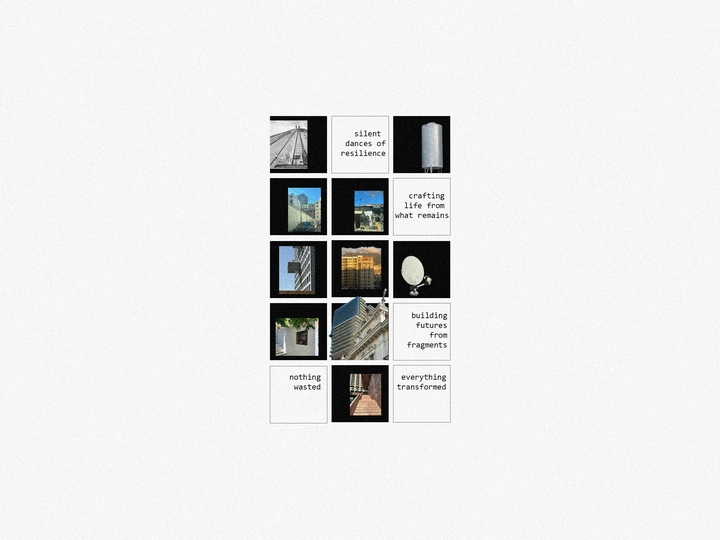Persistance through Scarcity

I am an architect and researcher currently pursuing a PhD in architecture and urban studies at Technical University of Munich. My work explores how scarcity shapes cultural practices and adapt the built environment over time, with a focus on everyday spatial agency and long-term transformation. I hold a Master of Science in Architecture and Urban Planning and have contributed to research projects, public institutions,planning and cultural initiatives in Albania and Germany. My experience includes work on EU-funded projects related to climate adaptation and urban resilience, collaborative design formats for public awareness, environmental advocacy practice in projects in Tirana, and ongoing research and practice in Munich on architectural adaptation through renovation and reuse. These experiences continue to inform my interest in how architecture can respond with care, flexibility, and sensitivity to context.
My methodology combines fieldwork, visual documentation, mapping, and speculative readings of urban space to uncover embedded spatial knowledge and forms of design intelligence passed through use rather than formal instruction. I see the LINA Architecture Programme as a meaningful extension of this research - an opportunity to share ideas, test methods, and contribute to a collective reflection on how architecture can respond with more care, flexibility, and sensitivity to complex social and environmental realities.
In a context of climate uncertainty, economic instability, and rapid urban transformation, architecture is often positioned as a vehicle of innovation and progress. Yet across time and space, certain spatial practices, material logics, or architectural forms seem to endure - quietly resisting cycles of crisis, demolition, and redevelopment. This project investigates what persists in architecture across different moments of scarcity and change, focusing on the city of Tirana as a lens into everyday practices of improvisation, resilience, and adaptation.
Rather than romanticizing the past or resisting progress, the project asks what forms of architectural intelligence - born out of necessity - continue to operate across time, and why they matter today. It proposes that within the informal, often overlooked, or improvised responses to constraint, there exist embedded spatial logics with untapped potential to inform future design thinking. In a time of polycrisis, where conventional systems are under strain, this research seeks to recover and reframe these persistent practices - not as models to replicate, but as sources of insight into adaptability, humility, and care in architecture.
Through visual documentation of field work, mapping, and speculative readings of everyday urban fabric, the project contributes to an architectural discourse that values not only innovation, but also what quietly endures.
Going deeper in the culture of improvisation and adaptation in architecture - the unwritten, often invisible logic by which people respond to scarcity, instability, and shifting urban conditions. Using Tirana as a case, it examines not only what physical forms persist in architecture over time, but how and why people engage with space the way they do. This is not about informal structures or DIY aesthetics alone, but about a kind of design intelligence passed through practice rather than formal instruction.